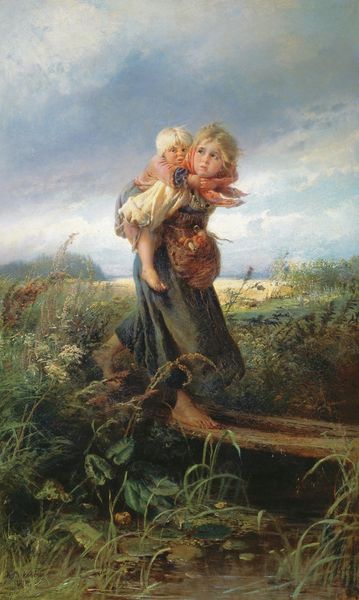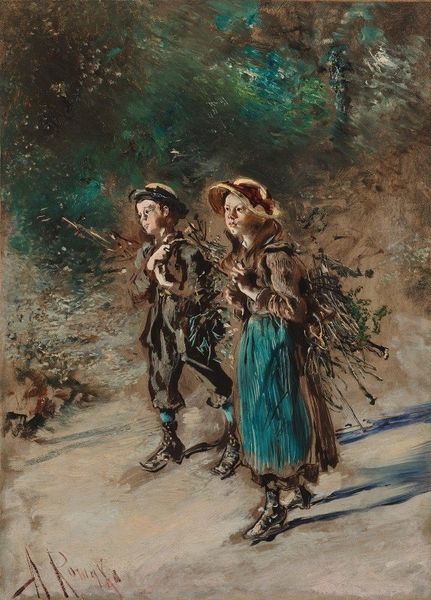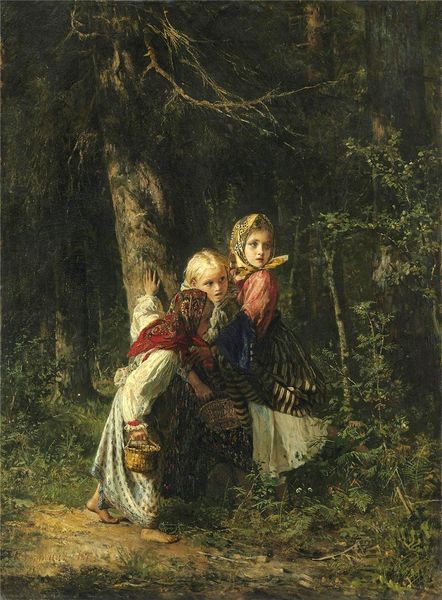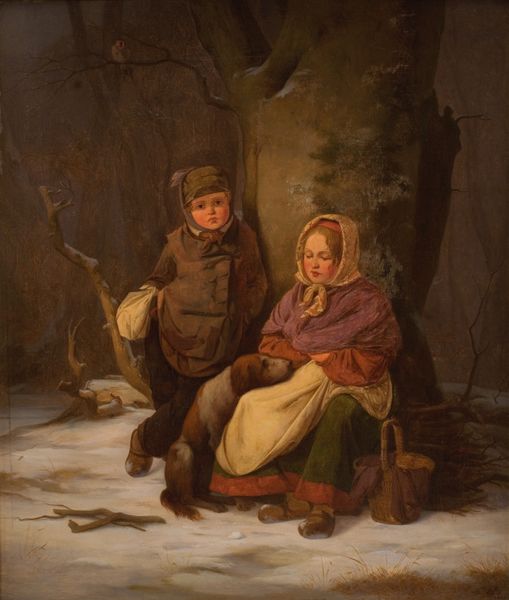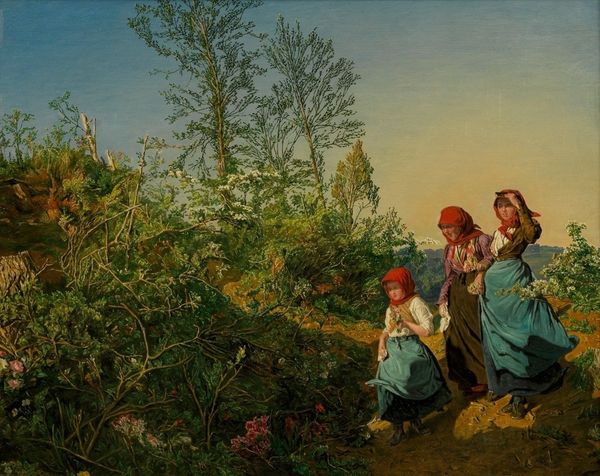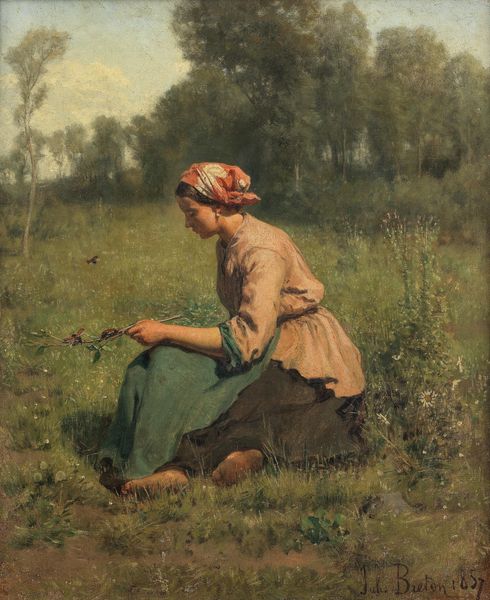
Dimensions: 46 x 37.5 cm
Copyright: Public domain
Curator: What strikes me first is how dreamlike this painting feels. The colours are muted, the edges soft…it’s as though we’re peering into a memory. Editor: This is Konstantin Makovsky’s “Peasant Children at Rest”, an oil painting from 1875. And while it appears idyllic, let’s consider the Russia it depicts – a society undergoing massive upheaval, with stark class divisions. Curator: Ah, so those "resting" children – likely enjoying a rare moment free from labour? It's funny how easily we romanticize "the simple life," isn't it? Those heavy garments look so hot in that landscape; the blond child’s smirk doesn’t quite convince me they are resting. They probably paused on their long day of labor for only just a brief moment. Editor: Exactly. Makovsky was part of the Peredvizhniki movement – artists focused on realistically portraying Russian life, often highlighting social inequalities. He did several paintings in similar style that got more and more famous. While the “resting” offers a snapshot of rural life, it also raises questions about childhood innocence and the realities of poverty. Curator: I see the "realism" at play, but he has definitely sprinkled in some fairy dust. Those rosy cheeks, that luminous hair…it’s heightened, theatrical almost! There is very subtle social critic that may also feel somewhat romanticized. Editor: The painting walks a tightrope between romanticism and realism, for sure. But those stylistic choices also have meaning. Consider how the painting reflects dominant attitudes toward peasants and class at the time. The Russian empire may have thought that some beautiful colors and forms might distract from more prominent underlying social and economic problems. Curator: Hmm, layered, like a good Russian novel. Editor: Precisely! Looking at this artwork encourages us to think critically about representation, and how art can both reflect and shape social narratives. Curator: I'm so very glad we discussed this one! It is a great reminder that “beauty” and “truth” rarely go hand-in-hand—at least not without a good, long wrestle. Editor: And in the act of wrestling, we move closer to understanding both. Thanks for the insights!
Comments
No comments
Be the first to comment and join the conversation on the ultimate creative platform.
